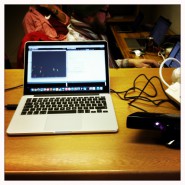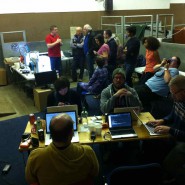 The island of Tiree with its sheep, wind surfing, and limited physical connection to the mainland seems like an unlikely place for a ‘tech’ conference. TechWave’s vision is to consider the social and philosophical challenges of technology by engaging directly with it but without specific objectives. Alan Dix, a mathematician & computer scientist founded the Tiree TechWave workshop. One theme that does recur in the workshop is the place of technology in peripheral, marginal, or disavantaged situations. The relative remoteness of Tiree, situated in the Inner Hebrides
The island of Tiree with its sheep, wind surfing, and limited physical connection to the mainland seems like an unlikely place for a ‘tech’ conference. TechWave’s vision is to consider the social and philosophical challenges of technology by engaging directly with it but without specific objectives. Alan Dix, a mathematician & computer scientist founded the Tiree TechWave workshop. One theme that does recur in the workshop is the place of technology in peripheral, marginal, or disavantaged situations. The relative remoteness of Tiree, situated in the Inner Hebrides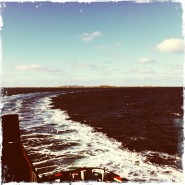 emphasises the specificities of deploying hi-tech in an environment. I attended the 8th TechWave and was able to discuss my dissertation and gain valuable insights into the questions of theories of mind.
emphasises the specificities of deploying hi-tech in an environment. I attended the 8th TechWave and was able to discuss my dissertation and gain valuable insights into the questions of theories of mind.
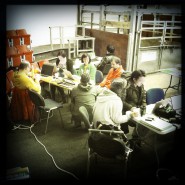 A group of Fellows from the UK-based innovation Charity NESTA worked on developing an AI application that predicted whether the weather would distrupt the sailing of the ferry that is the island’s life-line to the UK mainland at the port of Oban. I was priveleged to participate in their discussions and made a small contribution to their conceptualisation of the problem. This transdisciplinary approach is part of what makes these workshops so compelling. They don’t stand on disciplinary ceremony, but encourage a sharing of ideas and methods from the participants.
A group of Fellows from the UK-based innovation Charity NESTA worked on developing an AI application that predicted whether the weather would distrupt the sailing of the ferry that is the island’s life-line to the UK mainland at the port of Oban. I was priveleged to participate in their discussions and made a small contribution to their conceptualisation of the problem. This transdisciplinary approach is part of what makes these workshops so compelling. They don’t stand on disciplinary ceremony, but encourage a sharing of ideas and methods from the participants.
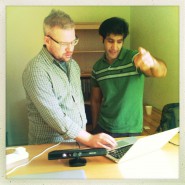 Part of this sharing is based on a policy of no specific outcomes. The argument for this is that by avoiding preconceived goals, this “open agenda does lead to remarkable things happening”. A kinect and arduino arrived in my bags but they were tools I offered, rather than part of a pre-conceived project. In the end I worked with David Morrison, a NESTA Fellow and graduate of Abertay University’s degree in computer games technology, and Mohamad Salimian, a PhD student and GRAND HQP from the Computer Science department of Dalhousie University. We worked together on getting David’s art game, based on a kinect-based body movement pachinko machine off the ground. You can get the code here:
Part of this sharing is based on a policy of no specific outcomes. The argument for this is that by avoiding preconceived goals, this “open agenda does lead to remarkable things happening”. A kinect and arduino arrived in my bags but they were tools I offered, rather than part of a pre-conceived project. In the end I worked with David Morrison, a NESTA Fellow and graduate of Abertay University’s degree in computer games technology, and Mohamad Salimian, a PhD student and GRAND HQP from the Computer Science department of Dalhousie University. We worked together on getting David’s art game, based on a kinect-based body movement pachinko machine off the ground. You can get the code here:- Kinect captures image of participant dancing & Moving
- Image suddenly disintegrates
- Leaving screen empty until image is re-established
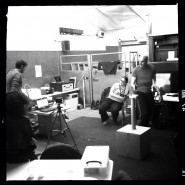 Equally interesting were the conversations where ideas were explored with a view to future development. Stephen Forshaw, a PhD candidate in the High Wire program at Lancaster University http://highwire.lancs.ac.uk/ critiques the “linearity” of education in the face of an icreasingly non-linear society. http://lancaster.academia.edu/StephenForshaw
Equally interesting were the conversations where ideas were explored with a view to future development. Stephen Forshaw, a PhD candidate in the High Wire program at Lancaster University http://highwire.lancs.ac.uk/ critiques the “linearity” of education in the face of an icreasingly non-linear society. http://lancaster.academia.edu/StephenForshaw



